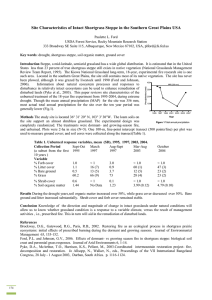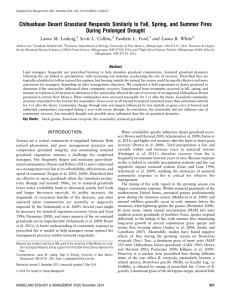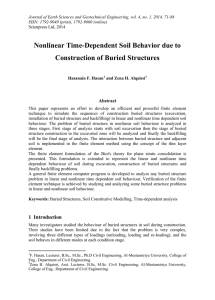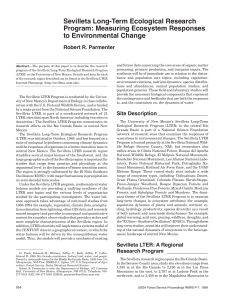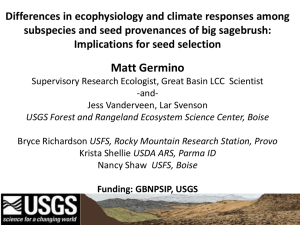Document 11871726
advertisement
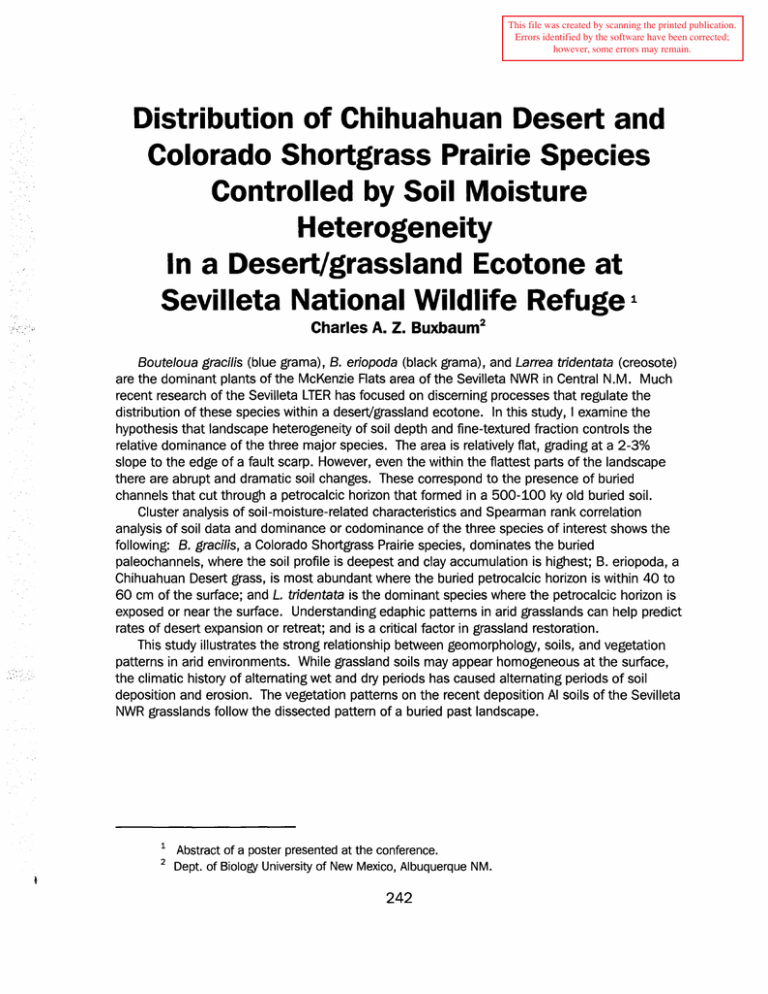
This file was created by scanning the printed publication. Errors identified by the software have been corrected; however, some errors may remain. Distribution of Chihuahuan Desert and Colorado Shortgrass Prairie Species Controlled by Soil Moisture Heterogeneity In a Desert/grassland Ecotone at Sevilleta National Wildlife Refuge 1 Charles A. Z. Buxbaum 2 Bouteloua gracilis (blue grama), B. eriopoda (black grama), and Larrea tridentata (creosote) are the dominant plants of the McKenzie Flats area of the Sevilleta NWR in Central N.M. Much recent research of the Sevilleta LTER has focused on discerning processes that regulate the distribution of these species within a deserVgrassland ecotone. In this study, I examine the hypothesis that landscape heterogeneity of soil depth and fine-textured fraction controls the relative dominance of the three major species. The area is relatively flat, grading at a 2-3% slope to the edge of a fault scarp. However, even the within the flattest parts of the landscape there are abrupt and dramatic soil changes. These correspond to the presence of buried channels that cut through a petrocalcic horizon that formed in a 500-100 ky old buried soil. Cluster analysis of soil-moisture-related characteristics and Spearman rank correlation analysis of soil data and dominance or codominance of the three species of interest shows the following: B. gracilis, a Colorado Shortgrass Prairie species, dominates the buried paleochannels, where the soil profile is deepest and clay accumulation is highest; B. eriopoda, a Chihuahuan Desert grass, is most abundant where the buried petrocalcic horizon is within 40 to 60 em of the surface; and L. tridentata is the dominant species where the petrocalcic horizon is exposed or near the surface. Understanding edaphic patterns in arid grasslands can help pr-edict rates of desert expansion or retreat; and is a critical factor in grassland restoration. This study illustrates the strong relationship between geomorphology, soils, and vegetation patterns in arid environments. While grassland soils may appear homogeneous at the surface, the climatic history of alternating wet and dry periods has caused alternating periods of soil deposition and erosion. The vegetation patterns on the recent deposition AI soils of the Sevilleta NWR grasslands follow the dissected pattern of a buried past landscape. 1 2 Abstract of a poster presented at the conference. Dept. of Biology University of New Mexico, Albuquerque NM. 242




